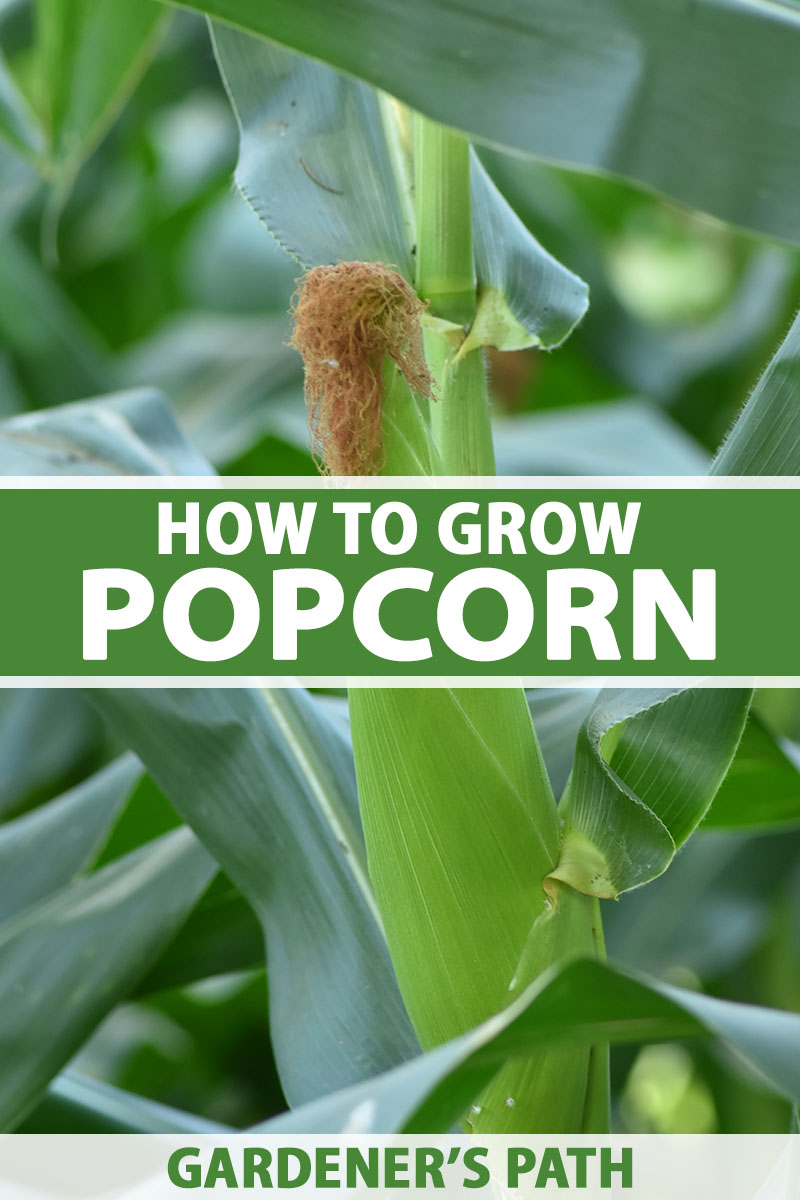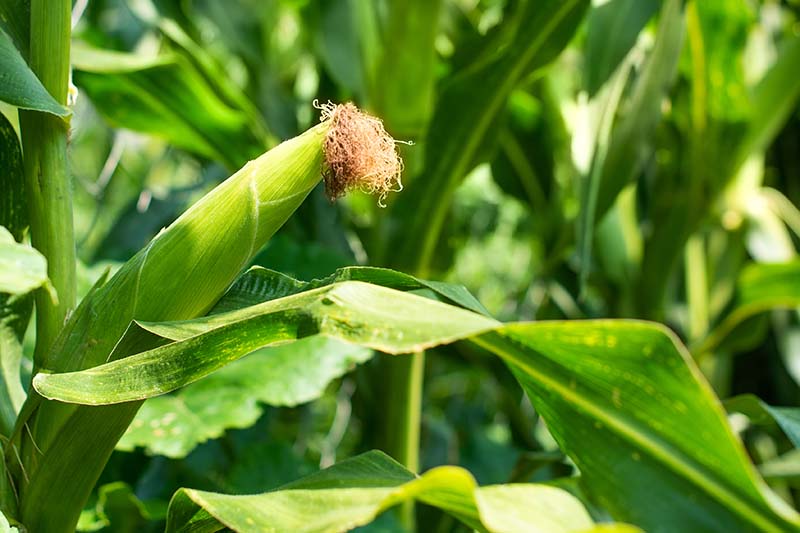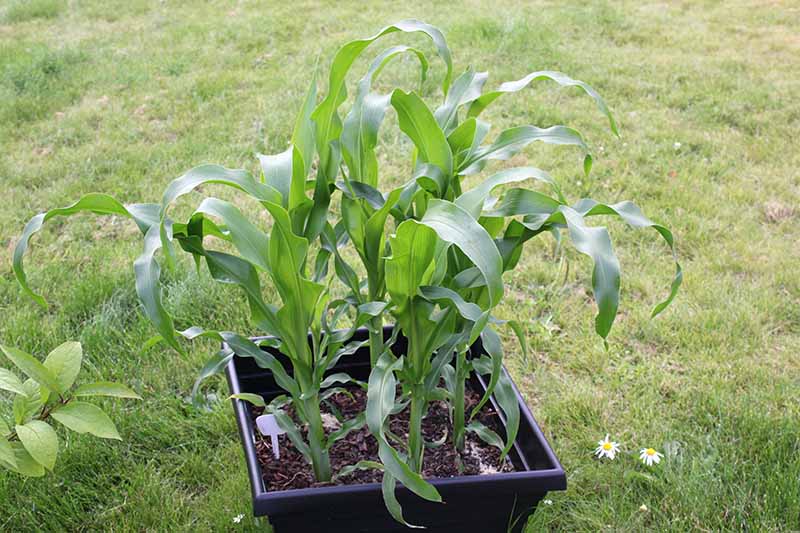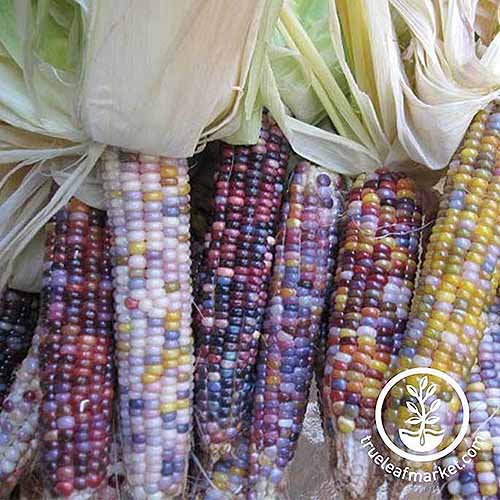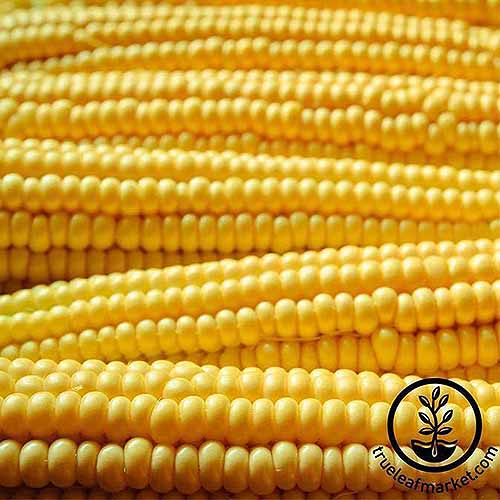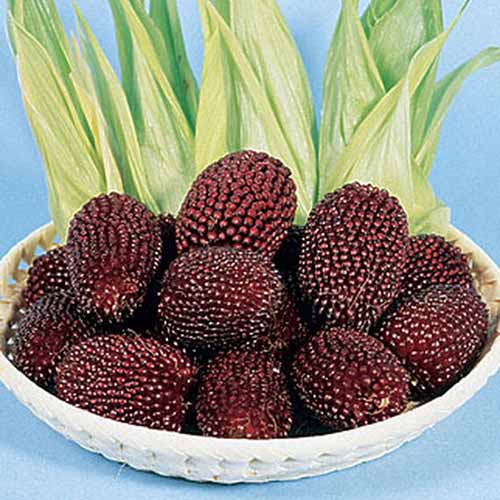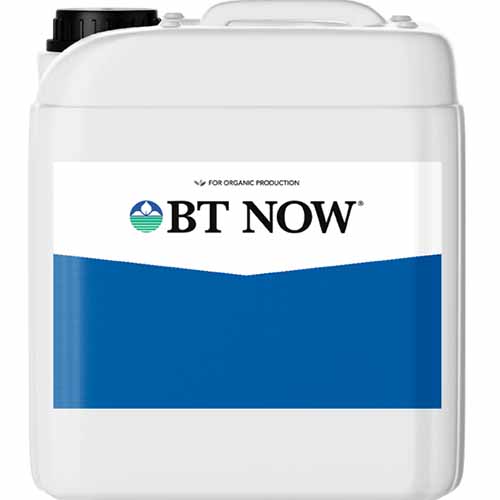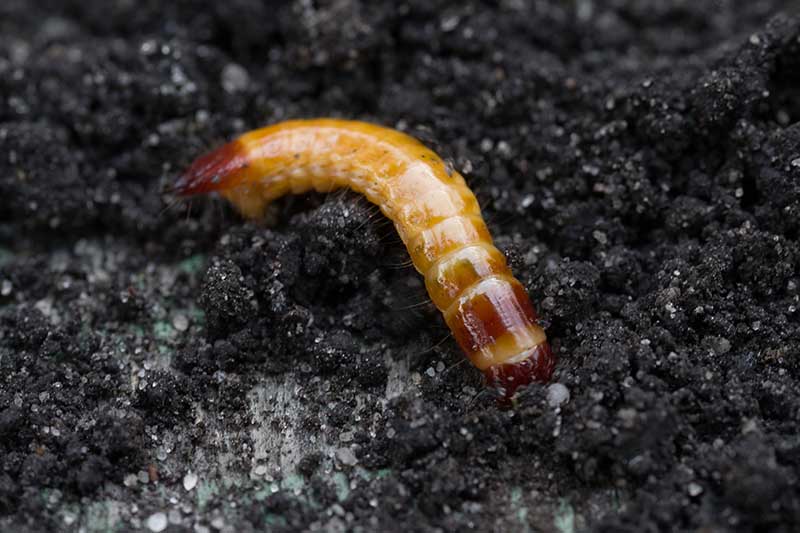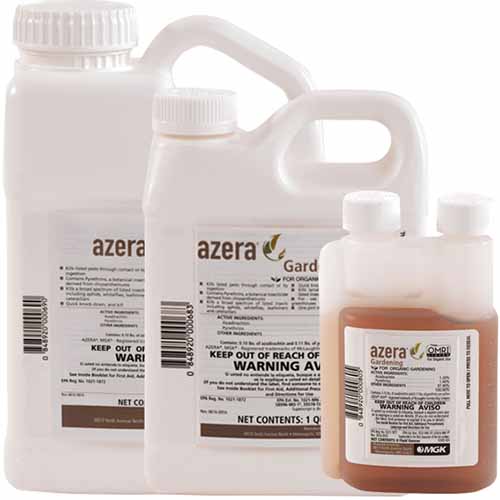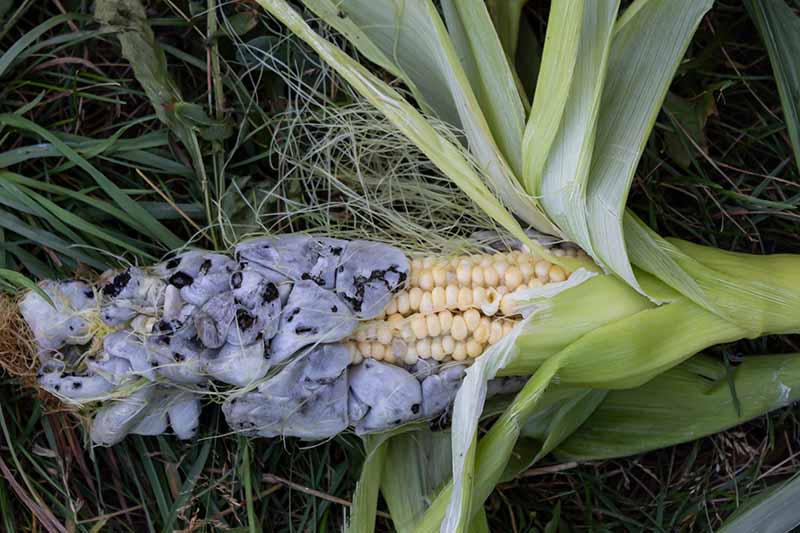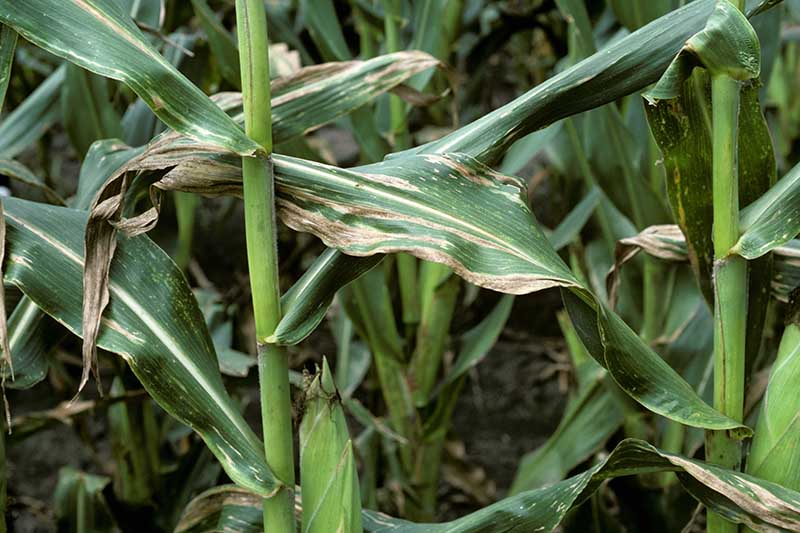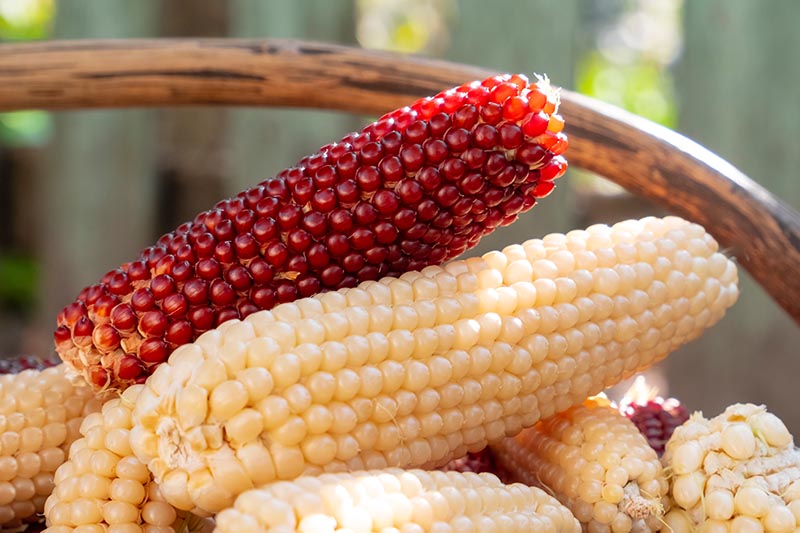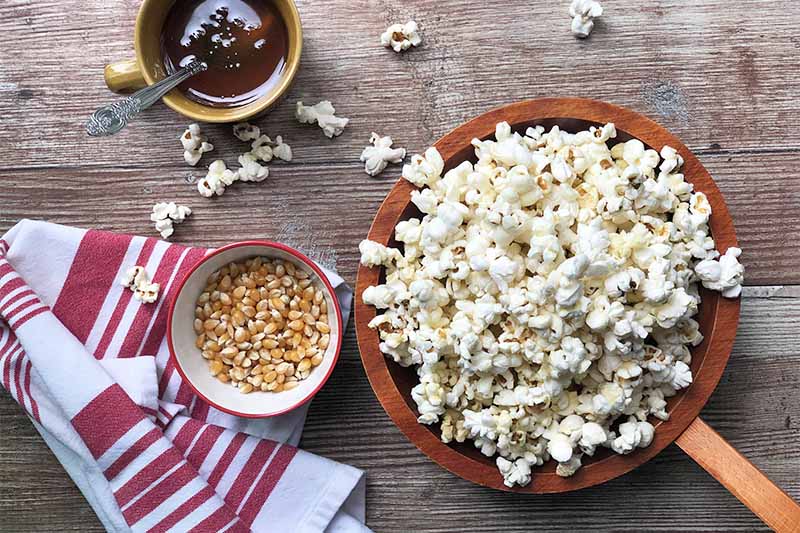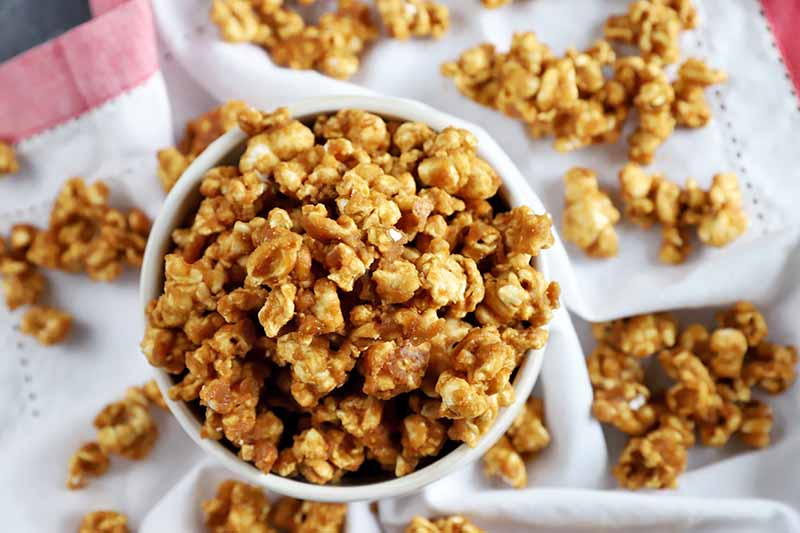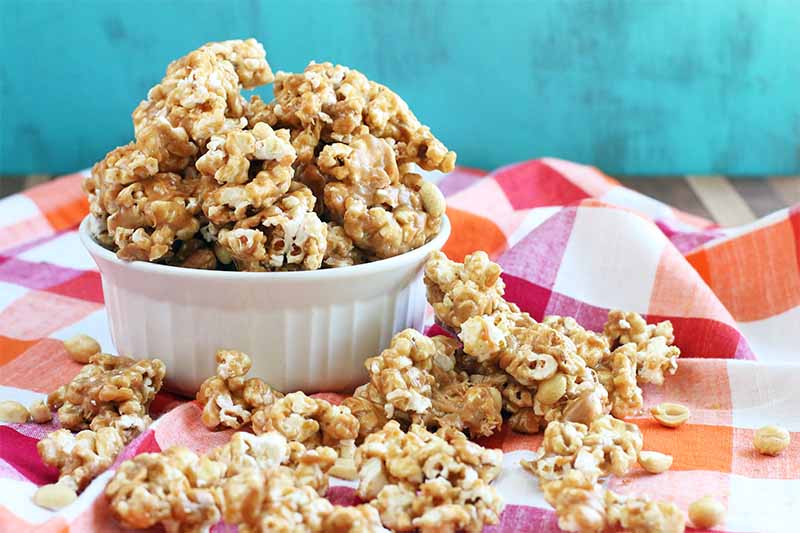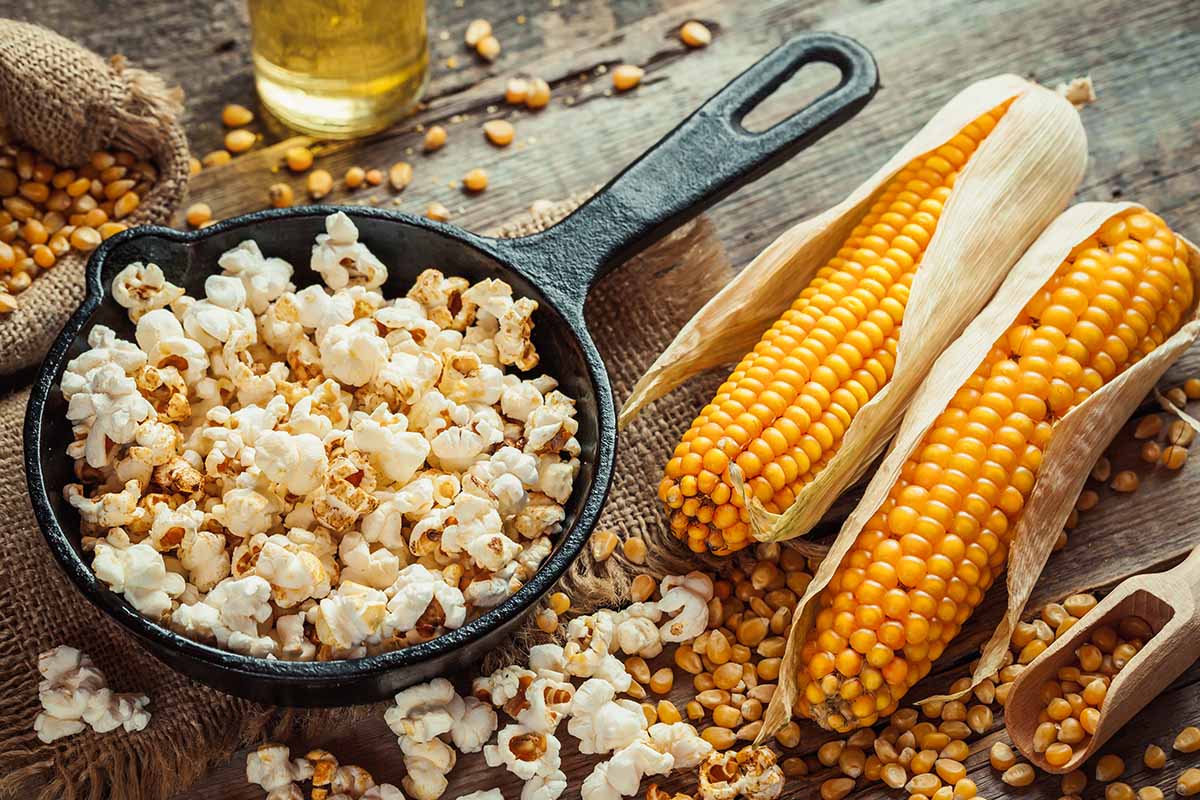It’s my husband, making his nightly popcorn. He loves it so much that he panics if we run out. If we go camping, he’s got to bring his special popping pan along. And yes, he always makes it in a pan – to him, there is no other way. So maybe it will come to you as no surprise that every summer, I grow my own popcorn for him to enjoy. We link to vendors to help you find relevant products. If you buy from one of our links, we may earn a commission. Let’s go!
What Is Popcorn?
Have you ever noticed that dried sweet corn looks totally different from popcorn? There’s little about the smooth, hard, pearl-like popcorn kernels that resembles a square-ish, wrinkly piece of dried sweet corn. The reason they look so distinct is that they’re entirely different varieties of maize. Of the five main Zea mays varieties grown in home gardens, Z. mays var. everta is the only one whose kernels pop when they are heated. The secret is in the composition of the kernels. In one kernel of Z. mays var. everta, there is first a hull, or pericarp, that is thicker than the hull of regular sweet corn. If you’ve ever accidentally munched on an “old maid” – an unpopped kernel left in the bottom of the pan – you know how hard these hulls are. Beneath the hull is a layer of starch that contains a little bit of moisture. When the popcorn kernels are heated to a temperature of 375 to 400°F, the water in the soft starch turns into steam, causing pressure to build up against the hull. The hull then explodes, making that classic popping sound, and the starch bursts out and instantly cools to a yellow-white or pure white puff. We then toss these with melted butter and sprinkle them with salt, or maybe sugar, and our favorite combinations of spices. Stay tuned to learn more about a few of our favorite recipes! No matter how you like to eat it, popcorn is always delicious. But if you were to try to pop dried-out sweet maize kernels, nothing would happen because the hulls are thinner and more porous. Steam easily escapes through them, which means there is no buildup of pressure, so they never pop.
Cultivation and History
Popcorn is a grain in the Poaceae family, but you can’t find it anywhere in nature. Around 10,000 years ago, Mesoamericans cultivated corn from a wild grass called “teosinte.” You can learn more about the origins of these plants in our guide to growing sweet corn. A recent excavation in Peru unearthed several ancient corn cobs, some of which suggest that people began popping corn between 3,000 and 6,700 years ago. Talk about a snack with longevity! The Haudenosaunee (Iroquois) people popped corn in pottery jars using heated sand before the mass colonization of the United States occurred. The white settlers took the idea and began to do the same thing – except over fires, or on stovetops. While many colonists did eat it as a snack, they also commonly ate it with milk, like we do with cereal today. In 1890, inventor and candy store owner Charles Cretor built a corn popping machine. Vendors drove horse-drawn carts selling popcorn, which helped the treat to grow in popularity. To this day, Cretor’s remains a family-owned business that sells popcorn machines for movie theaters, restaurants, and other venues. While the Great Depression decimated the economy, it didn’t kill popcorn’s success. At just five to 10 cents per bag, the treat remained affordable for many. During World War II, people consumed three times more popcorn than they had before, because there wasn’t as much candy available due to sugar rationing. When movie theaters started becoming popular in the mid-20th century, popcorn sales boomed. Theater owners didn’t actually sell it inside at first because they didn’t care for the idea of cleaning up spilled kernels, but sellers set up stands near theaters. Before long, the theaters gave in to the trend and began selling the snack themselves. And the rest is history, as they say. This fluffy, crunchy, delicious-when-slathered-in-butter snack is still inexpensive and popular whether it’s popped in a microwave, on a stovetop, or in a countertop or commercial appliance. It’s so popular, in fact, that Americans alone consume 15 billion quarts of it each year.
Propagation
You can either grow this plant from seed or purchase seedlings at a nursery, but here’s something I learned early in my popcorn-growing adventures: if you live somewhere with a short growing season (like Alaska), start your seeds indoors at least a month before you plan to plant them out into the garden. I like to start mine indoors in March or April for transplanting. I once made the mistake of not sowing my seeds indoors, and while they grew beautifully and began to form silk, the early frosts and freezing September weather killed them before I could enjoy a single taste of homegrown popcorn. You’ve been warned!
Starting Seeds
Popcorn is suitable for growing in USDA Hardiness Zones 3 to 11, but if you live in Zones 3 to 5, start your seeds indoors in late February or early March. In Zones 6 to 11, you can sow them directly in your garden about two weeks after your average last frost date. For successful germination, the soil must be at least 50°F, so keep that in mind, as well. When I sowed my seeds a touch too early, they took several weeks to germinate. But when they finally did, I was delighted! The planting location should receive at least six to eight hours of full sunlight every day. Amend the area with compost or well-rotted manure. Consider conducting a soil test to make sure the pH is between 5.5 and 7.5, and to check to see if there are any nutrient deficiencies, so you can adjust accordingly. The soil should be loamy and well-draining. To sow your seeds, poke one-inch-deep holes in the dirt, spaced four to nine inches apart in a grid formation. The exact spacing between plants depends on the variety you are growing – you’ll find this information on your seed packet. I like to place two seeds into each hole in case one doesn’t germinate. Cover them with soil, and water them in well. Here’s an important piece of advice: Make sure you don’t plant Z. mays var. everta next other types of corn. If they silk at the same time, they’ll cross-pollinate via the wind, causing both types to produce tough, inedible kernels. Did I make this mistake as a newbie gardener? Yes, I did, but thankfully I caught the mistake before they cross-pollinated, and I had time to transplant the seedlings to a totally different area of my yard. But I digress. You’ll need to keep the soil moist but not waterlogged until the seeds germinate. If both seeds germinate if you’ve elected to plant two to a hole, once the seedlings have two sets of leaves, pinch the smaller one off with your fingers to let the stronger plant continue growing. To start your seeds indoors, fill trays with potting mix, make one-inch-deep holes, place two seeds in each cell, and cover with soil. Set the seeds in a sunny windowsill for warmth or place a heat pad beneath them, keeping them moist until germination. Once they germinate, place them under a grow light for eight to 10 hours a day if they aren’t near a sunny window.
Transplanting Seedlings
It’s easy to transplant seedlings or nursery starts outdoors. Dig holes the same width and depth as the pots the plants are currently growing in, spacing them four to nine inches apart, depending on the variety. Gently remove each seedling from the pot and set it inside a hole. Backfill with soil, water thoroughly, and voila! You’re done.
How to Grow
To grow tall, healthy, and strong, your plants each need an inch of water a week via a deep, thorough watering. If you receive adequate rainfall, you don’t need to supply additional irrigation. You may want to use a rain gauge to measure the amount of rainfall that you receive in your area. A good rule of thumb is to let the top half-inch of soil dry out between waterings. When the plants begin to grow tassels and ears, they will require more water, so you will need to increase watering to two inches per week in the absence of rain. As I have already mentioned, make sure you don’t plant your popcorn near sweetcorn. As these plants are wind-pollinated, you’re likely to get unwanted cross-pollination and a poor crop if they are growing too close together. Speaking of pollination, a common issue gardeners encounter is corn that doesn’t get fully fertilized. You’ll know this has happened if a cob is full of empty spaces where kernels did not develop. For successful pollination, pollen has to blow off the male flowers, which are called tassels, and land on every single silk, because each of these is connected to a floret on the ear. The pollen travels all the way down each strand of silk and pollinates a female floret, which eventually turns into a kernel. If you’re like me and don’t want to leave pollination to chance, it’s easy to hand-pollinate maize. See our guide to learn how to hand pollinate corn. Trust me, hand pollination works, and I prefer to use this method rather than leaving things to the wind. If you’re like me, you won’t be able to resist plucking an ear early just to see if it was fully pollinated. To keep your plants growing strong, fertilize every two to three weeks before the silks emerge with a balanced, 10-10-10 (NPK) fertilizer, according to package instructions. Once silks emerge, usually a few days to a week after the tassels do, fertilize the plants one final time.
Growing Tips
In the absence of rain, provide one inch of water a week, increasing to two inches once tassels and silks appear.Hand-pollinate for best results.Fertilize with a balanced, 10-10-10 NPK fertilizer every two to three weeks.
Cultivars to Select
From unique, jewel-hued cobs to classic yellow pearls, here are some of my favorite cultivars for you to grow in your garden. You can learn about more popcorn varieties in our roundup.
Pests
Z. mays var. everta shares many of the same pest problems as other Z. mays varieties, but here are three that seem to bother popcorn in particular. Carl Barnes, a renowned Cherokee horticulturist from Oklahoma, intentionally grew older varieties of corn and began isolating those with traits similar to ancestral varieties lost to the Cherokee when they were forcibly removed to Oklahoma in the mid-1800s. ‘Glass Gem’ ‘Glass Gem’ is one variety that Barnes restored, bringing a sense of cultural identity back to his people. It rose to fame in 2012 when a photo of the colorful cobs went viral. You can grow this sensation at home, but have fun deciding whether or not to keep it as an eternal, gorgeous decoration or popping and eating it! ‘Glass Gem’ matures in 110 days, grows nine feet tall, and spreads about a foot. Find packets of seeds available at True Leaf Market.
Robust Yellow Hulless
If you love popcorn but hate how there always seem to be a handful of old maids lying at the bottom of the pan, try this hybrid. Despite its name, it’s not actually “hulless,” as the hull is part of the seed and every kernel has one. But in this case, the hull is thinner than what you’ll find with most varieties and breaks into small pieces during popping, which means there’ll be less stuck-in-your-teeth action when you eat it. ‘Robust Yellow’ ‘Robust Yellow’ matures in 110 days. Space each plant four inches apart in a grid formation for best results. You can find seeds in a variety of packet sizes available from True Leaf Market.
Strawberry
For small cobs adorned with ruby-colored kernels, look no further than ‘Strawberry,’ a variety that grows five to six feet tall, spreads seven to nine inches wide, and grows tiny, two- to three-inch ears. ‘Strawberry’ Space them about nine inches apart and grow as many as you want, to use for fall decorations that you can then pop when it’s time for the winter decor to take over. These cobs reach maturity in about 100 days, and you can find packets of 400 seeds available at Burpee.
Managing Pests and Disease
Popcorn is susceptible to several types of pests and diseases. If you make sure to go out into the garden and check on your verdant stalks regularly, you can spot problems before they get out of hand.
Aphids
Is a plant really a plant if aphids don’t love to infest it? True to form, the small yellow-green to reddish-brown creatures love feeding on tassels, silks, and ears, which is something you don’t want because it’ll rob you of those juicy kernels. If you notice the tiny insects on any part of your plants, spray them off with a hose and apply insecticidal soap or neem oil to the area every other day to keep them from returning. All sorts of species of aphids can plague corn, but a few common ones are corn leaf aphids (Rhopalosiphum maidis), bird-cherry oat aphids (R. padi), and English grain aphids (Sitobion avenae). Learn more about how to manage aphids in our guide.
Corn Earworms
These moths (Helicoverpa zea) do the most damage when their larvae feed on the silks and ears. If you notice that the silks are disappearing, remove an ear and check it and the surrounding plants for the yellowish-greenish caterpillars. You can spray any affected plants with BT NOW, which uses Bacillus thuringiensis var. kurstaki (Btk), a type of beneficial bacteria that produces a crystallized protein that’s toxic to these caterpillars. BT NOW BT NOW is available from Arbico Organics. Read more about how to use Bacillus thuringiensis in our guide.
Corn Flea Beetle
This tiny, black, 1/16-inch-long beetle (Chaetocnema pulicaria) lays its eggs on and around corn plants. When they hatch, the larvae nibble at the roots, but not usually enough to cause considerable damage. The adult beetles will strip away the outer layer of leaf tissue, especially on seedlings, and they may spread the deadly Stewart’s wilt disease, caused by Pantoea stewartii bacteria. To help prevent a flea beetle infestation, keep your crop clean and free of weeds and debris. If you notice the presence of these small but clearly visible black beetles, remove them by hand and spray the leaves with insecticidal soap according to package instructions.
Wireworms
These brownish-orange pests (Melanotus communis) are the larvae of click beetles, and they love to eat corn seeds before they even germinate. If you notice that your row of young corn is growing like a gap-filled set of teeth, you might be dealing with wireworms. These half- to one-and-a-half-inch worms also love to tunnel into the roots of young shoots and eat them from the inside out, resulting in stunted young plants. To treat an infestation, remove any visible wireworms and spray the plants with Azera Gardening organic insecticide, which is made from plant extracts derived from daisies and neem trees. Azera Gardening Organic Insecticide It’s available at Arbico Organics.
Disease
It’s important not only to check your plants regularly for pests, but also to be on the lookout for these common diseases that can affect Z. mays var. everta.
Root Rot
The possibility of root rot developing is another reason why it’s crucial to plant corn in well-draining soil. Root rot is caused by various types of fungi in the Pythium, Fusarium, and Rhizoctonia genera, and it develops in the cool, damp growing conditions that often occur in early spring. The foliage turns dark and wilts when plants are infected. To limit infection, allow the top half-inch of soil to dry out between waterings. If it’s extra rainy, consider covering the young seedlings with a tarp until they can dry out sufficiently.
Smut
This strange disease, caused by the fungus Ustilago maydis, causes whitish-black galls to develop on the ears, stems, and tassels. While galls on the leaves and tassels stay relatively small and unobtrusive, those on the ears cause the kernels to puff up into freaky-looking, blue-purple lumps. But believe it or not, you can actually eat kernel smut. In Mexico, it’s called huitlacoche, and it makes a delicious taco filling. Fans of huitlacoche say it has “an inky, mushroomy flavor,” according to “Scourge No More: Chefs Invite Corn Fungus to the Plate,” a 2015 article featured on NPR. Unfortunately, it will ruin your crop. Remove any affected plants and spray the area with copper fungicide to help slow or prevent the spread of infection… and then go try some cooked huitlacoche in a taco if you’re brave, or you could even sell it to local chefs. (No, really. They’d probably love to take it off your hands.) You can learn more about black smut fungus in our guide.
Stewart’s Wilt
An often deadly bacterial disease, Stewart’s wilt is caused by Pantoea stewartii. Also called bacterial wilt or bacterial leaf blight, this disease occurs throughout the midwestern, eastern, and southern United States, and is transmitted by the corn flea beetle (Chaetocnema pulicaria). The adult beetle feeds on plants, causing striped, yellowish, bacteria-infested lesions to form in the leaves. Before long, the entire plant can turn yellow and die. To combat this disease, remove any affected plants at the first sign of infection, and spray the remaining plants with insecticidal soap or neem oil every few days. Be sure to dispose of them in the trash, not on the compost pile.
Harvesting and Preserving
The key difference between harvesting popcorn and sweetcorn is that you don’t remove the ears when the kernels are in the juicy milk stage. Instead, you leave the ears in the garden for as long as you can until they dry out almost completely. The kernels should be hard. To harvest, take the ears off the plant, remove the husks, and place the cobs in mesh bags. Hang them in a dry place with good ventilation to continue drying. Every few days, scrape a few kernels off of a cob and try popping them. If they’re chewy or don’t pop completely, they still have too much moisture inside and must continue drying. Once your test kernels are popping perfectly, remove the remaining kernels from the ears by rubbing two dry cobs against each other over a large, deep bucket or container. You can also scrape them off with your thumb. You can store your homegrown, gourmet popcorn in airtight containers for several years – if it lasts that long! Check out our tips on dry harvesting corn for more information.
Recipes and Cooking Ideas
I love popcorn so much that it’s hard to find a favorite recipe, but I absolutely adore this sea salt and honey butter popcorn from our sister site, Foodal. It’s sweet, crunchy, slightly moist, and utterly satisfying as a light dessert or snack. If you prefer to go full-on sugary, you could always make this classic recipe for easy caramel-coated popcorn, also from Foodal. It’s hard to beat the delicious crunch of caramel corn! Or, if you want to turn your homegrown kernels into a serious snack and you adore everything pumpkin spice, try this pumpkin spice peanut butter popcorn recipe from Foodal. It’ll give you all the cozy fall feels no matter what time of the year you make it. If you want to impress a friend, have them over for a big bowl of it and let it slip that you grew it yourself. They’ll be impressed, I promise. Now, excuse me while I go pop some kernels to enjoy on the couch… Tell me, have you ever grown your own kernels to pop? How did they turn out? I’d love to hear any stories or questions in the comments section below. And for more information about growing corn in your garden, check out these articles next:
How to Grow Dent Corn in Your BackyardWhy Are My Corn Seedlings Dying? 5 Common Reasons9 of the Best Companion Plants to Grow with Corn
